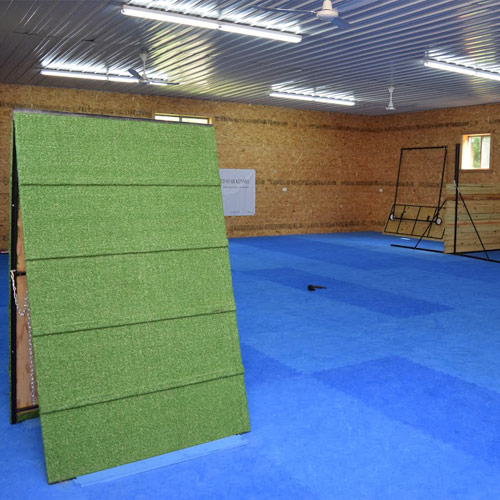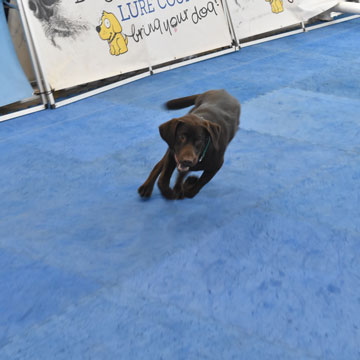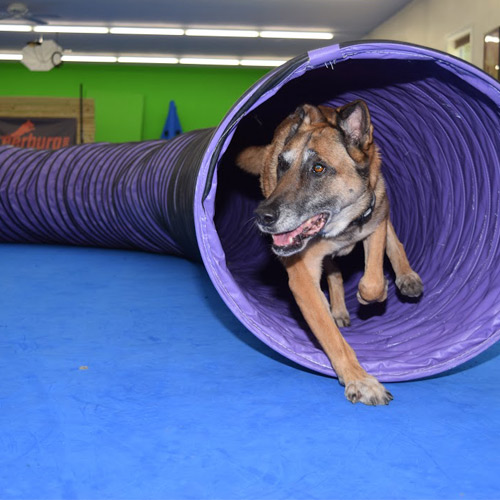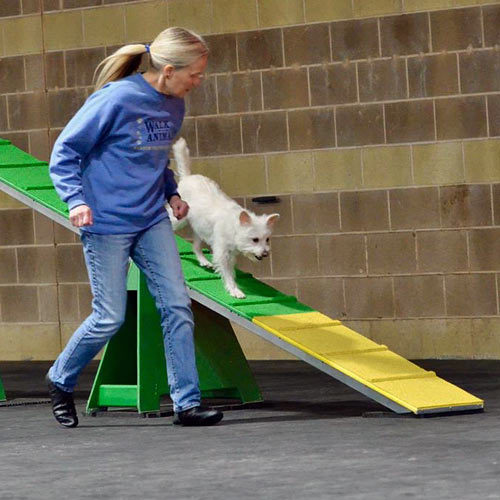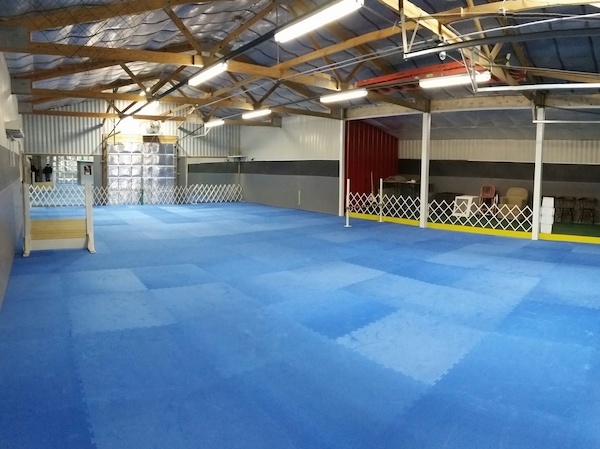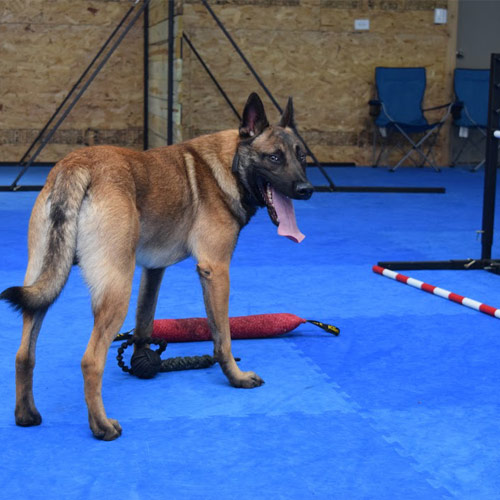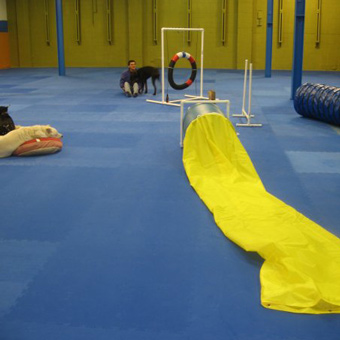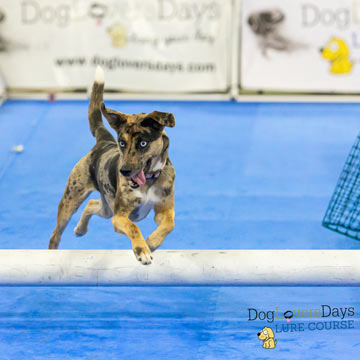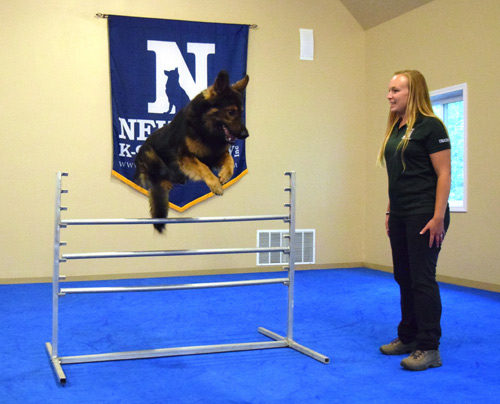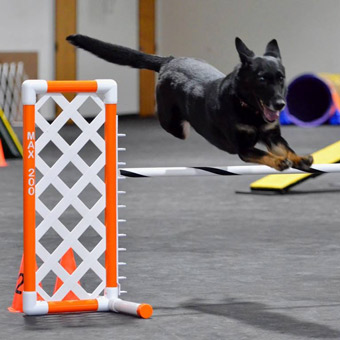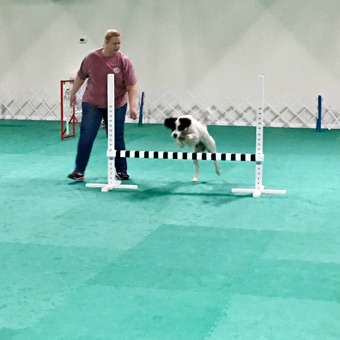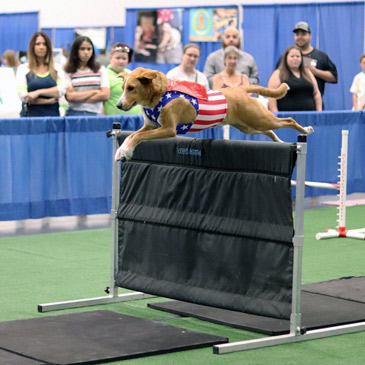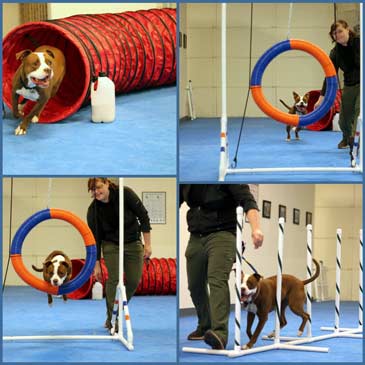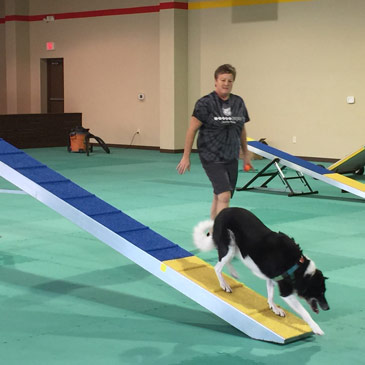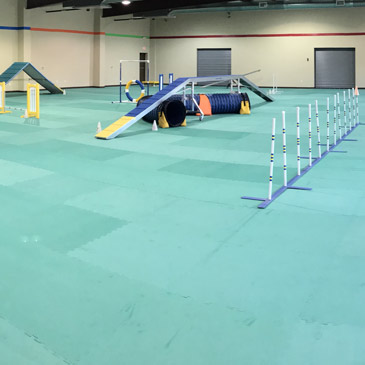Dog Agility Mats - Interlocking Flooring for Equipment and Training
Related Product: Dog Agility Mats Interlocking Tiles 3/4 Inch x 1x1 Meter
That’s a lot to ask of any flooring, but Greatmats’ Dog Agility Mats Interlocking Tiles were designed specifically for this application. These interlocking foam mats for dogs feature a no-slip grip surface, but their EVA foam construction makes them cushioned and comfortable underfoot.
Some facilities use rubber matting for dog agility equipment, but that type of flooring is a firmer material, and dogs can slip more easily if you get the wrong design. These EVA foam agility mats are designed to protect a dog’s foot pad, helping to prevent a dog from snagging or losing a nail while on course. The mats have just a little bit of give when compared to rubber, keeping your dog’s nails safer and making it easier on the pads of the dogs' feet.
Uses for Dog Agility Mats
These dog floor mats are ideal for agility training and competition, but they can serve many purposes. Use them as dog training floor mats in your training facility, or build a fly ball course or other exercise area with them. They can also work as pet flooring mats, making a comfortable and safe addition to a dog kennel or dog daycare.The mats are portable and can be installed without gluing them down, so you can temporarily install them to make a space more versatile.
Installing Dog Agility Mats
Dog agility mats are incredibly easy to install, and they don’t require any tape or glue. Each mat measures 3.3 by 3.3 feet and weighs six pounds, so you can quickly cover a large area and a single person can perform the whole installation. Each mat includes four border strips, so you can use them against walls or you can create an island installation with clean, finished edges.These mats are designed for indoor use and can be installed over a hard, flat surface. Installing them is as easy as lining up the mat edges and fitting them together like puzzle pieces. The mats create tight connections and won’t pull apart while in use.
You can install these mats in a wall-to-wall design by trimming the mats to fit with a sharp utility knife and a straight edge to guide your cuts. Make repeated, shallow scores and gradually work your way through the mats for the best results.
Buying dog agility mats instead of rolls of flooring has many advantages. Not only are these mats easy to remove and reinstall, but if a single mat gets damaged or worn, you can flip the mat over so its reverse side shows. You can also replace just one or two mats if desired, keeping your flooring looking clean and professional. With large rolls of flooring, replacing sections quickly adds up financially.
At what age can dog agility training start?
Young dogs can potentially injure their joints if asked to repeatedly jump and make tight turns, so it’s important to delay this type of training until your dog is at least a year or two old. You’ll want your puppy’s growth plates to be fully closed before this type of training, which usually happens by the time your puppy is 18 months old. This can differ from breed to breed, so be sure to speak with your vet about when it’s appropriate to start training with your dog.Even if you can’t start training your puppy or young dog over obstacles, you can still do some basic obedience training that will prepare your dog for agility. Working on commands like heel, sit, stay, and come will give your dog a good training foundation that you can rely on once you start your more formal training. You can also build on your own education by watching dog agility training videos, so you’re familiar with the training techniques.
